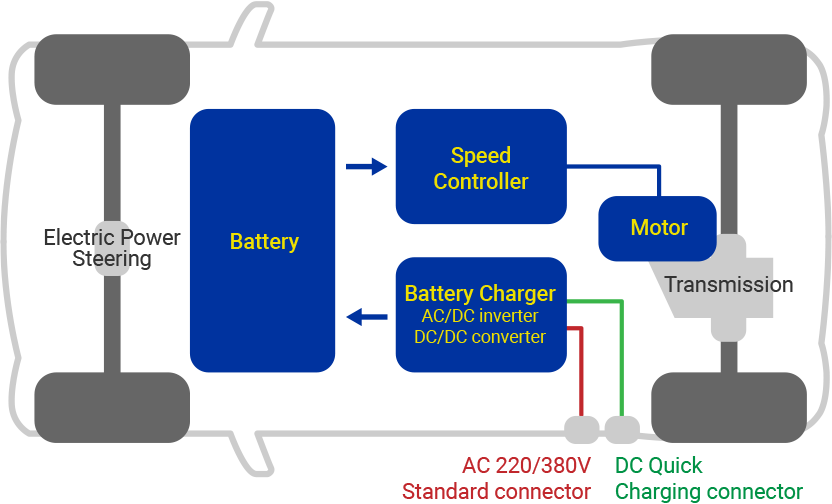About electric vehicles
Learn more about different types of electric vehicles (EVs). Find out why you should switch to an EV, and what you should consider before buying an EV.

Electric vehicles are a more sustainable form of transportation. The HKSAR Government supports EV ownership through incentives and policies. There are several types of electric vehicles. Some run purely on electricity while some do not.
Refer to the table below to find out more about EV:
Pure
Battery electric vehicles are all-electric vehicles that store electrical energy from an external source. Their motors are powered by batteries only.
- Electricity
Hybrid
Hybrid electric vehicles mainly use an internal combustion engine. They have a back-up battery system that captures energy normally lost during braking.
- Petrol; or
- Diesel
Plug-in Hybrid
Plug-in hybrid electric vehicles are hybrid electric vehicles that can support charging.
- Petrol or diesel; and
- Electricity
Benefits of EV
Compared to vehicles with internal combustion engines, electric vehicles:
- Are cheaper to operate and maintain;
- Are quieter and more energy efficient; and
- Emit less air pollutant and carbon.
Considerations: Before buying an EV
Your EV’s driving range is the most important factor to consider. Driving range represents the distance your EV can travel before running out of battery. Generally, a fully charged EV can travel 200 to 400km.The driving range per charge depends on the following factors:
- Vehicle’s model
- Vehicle’s battery capacity
- Charging mode selected
- Charging duration
Like phone batteries, the capacity of EV batteries may decrease over time. Before you buy an EV, you should check its battery capacity. Depending on the degree of depletion, you may have to replace the battery and account for the cost.
To avoid running out of battery when driving, make sure that you have sufficient electricity before your journey and access to an EV charger at your parking space. You should consider your:
- Driving pattern;
- Destination; and
- EV’s driving range.
You can check EV charging locations online.
Your EV’s charging time depends on your:
- EV’s battery capacity
- EV’s battery status (e.g. empty vs full)
- EV’s charging rate
- Charging mode
Refer to the table below to understand the estimated charging times:
Standard

≦ 2.8
≧ 7-8 hours
Medium Charging
.png)
≦ 20
≧ 1 hour
Quick Charging
.png)
.png)

> 20
< 1 hour
80% battery charged up in around 30 minutes in DC charging (Depend on EV mode)
Although EVs generally require less maintenance, certain parts may require specialised care. Before you buy an EV, make sure that your manufacturer or service provider covers maintenance services.
More information
Visit the following websites for latest news about EV:
- EV-charging at Home Subsidy Scheme (by Environmental Protection Department)
- Promotion of Electric Vehicles in Hong Kong (by Environmental Protection Department)
Before establishing EV charging facilities at your premises, please read the following guidelines:
Outline how to establish EV charging-enabling facilities in car parks of new building development
Environmental Protection Department, HKSARG
Sets out the requirements and general guidelines for installation of EV charging facilities
Electrical and Mechanical Services Department, HKSARG
Code of Practice for the Electricity (Wiring) Regulations (Section 26S -Charging Facilities for Electric Vehicles) (PDF)
Outline the latest Code of Practice for the Electricity (Wiring) Regulations to cover the installation of charging facilities for EV
Electrical and Mechanical Services Department, HKSARG





